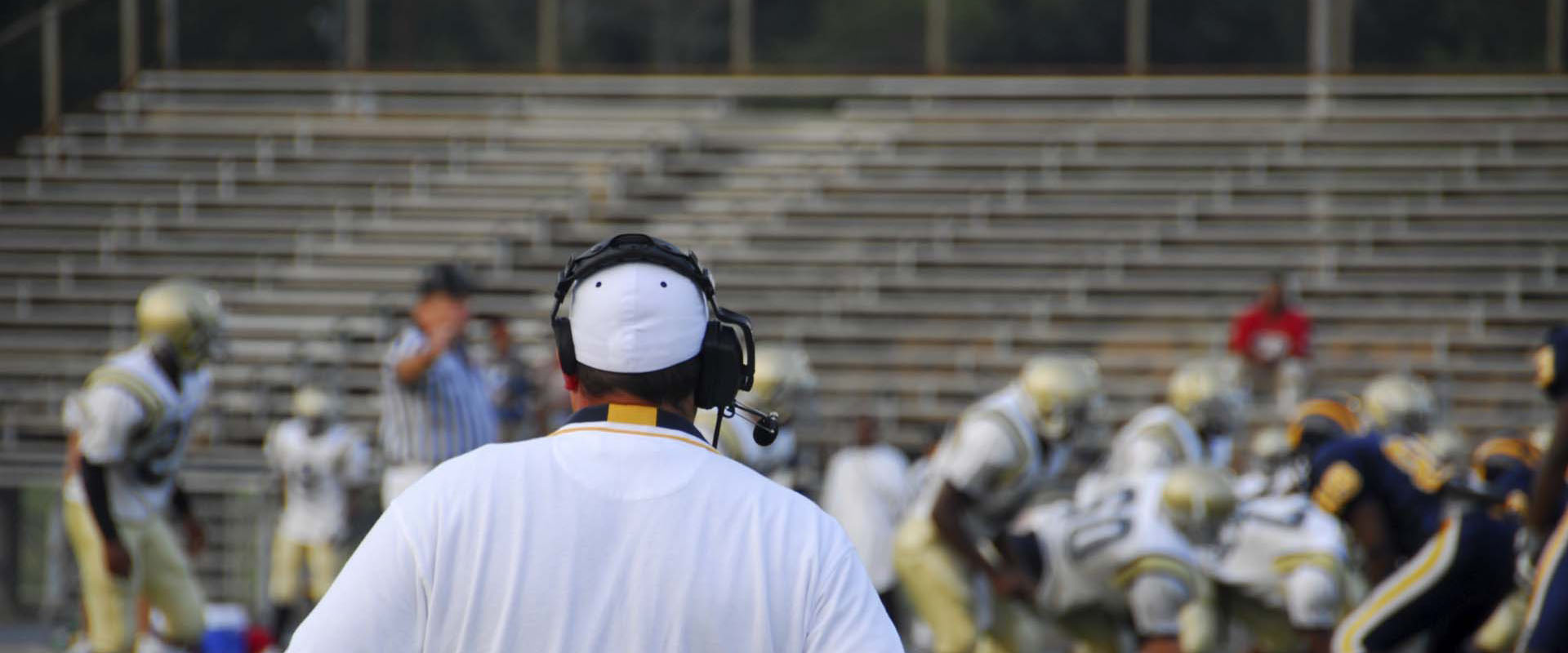Court Finds That High School Athletic Program Violated Title IX

April 2012
Number 15
In the recent decision Ollier v. Sweetwater Union High School District (S.D. Cal. Feb. 9, 2012) 2012 WL 424413, the U.S. District Court of the Southern District of California conducted a detailed examination of a high school athletic program's Title IX compliance. In Ollier, the court found that the high school's female athletes were denied the opportunity to participate in sports on an equal level with the male students at their school in violation of Title IX.
Title IX of the Equal Opportunity in Education Act of 1972 bans sex discrimination in schools. Although most litigation and controversy under Title IX relates to student athletics, as it did in this case, schools should keep in mind that the law applies equally to academics. Title IX requires female student athletes to have equal opportunities as male student athletes, while giving schools the flexibility to choose athletic programs based on student body interest, geographic influence, budget restraints, and gender ratio. For example, Title IX does not require female student athletes to be able to participate in football, nor does it require exactly the same amount of money be spent on softball and baseball. Instead, female student athletes must be provided with overall equal opportunities, treatment and benefits compared to male student athletics.
In Ollier, the plaintiff class consisted of all present and future high school female students and potential students who participate, seek to participate, and are or were deterred from participating in student athletics activities at the high school. In March 2009, the court found that the district was not in compliance with Title IX based upon unequal participation opportunities in the athletic program. Most recently in February 2012, the court found the district to be in violation of Title IX based on unequal treatment and benefits provided to females at the high school and the school's retaliatory termination of the softball coach for complaining about the female athletes' softball facilities.
Framing its analysis and decision, the court stated that compliance in the area of equal treatment and benefits under Title IX is based on an overall comparison of the male and female athletic programs. A disparity in one program component can be offset by a comparable advantage to that sex in another area as long as the overall effect of any differences is negligible. However, a disparity in one program component can violate Title IX if it is substantial enough to deny equality of athletic opportunity to students of one sex at a school.
The court also noted the strong public interest in remedying gender discrimination, highlighting the lifelong, positive benefits that participating in team sports can have on females. For these reasons, gender discrimination remains a current issue that can be addressed by the judicial system.
In ruling that Title IX had been violated, the court detailed eight categories of unequal treatment and benefits: recruiting benefits; locker rooms, practice and competition facilities; equipment, uniforms and storage; scheduling benefits; equal access to coaching; medical and training services; publicity and promotional support; and fundraising benefits. For example, the court found that female athletes were provided with fewer coaches, coaches with more limited experience, and coaches who were unable to adequately coach because of excessive other assignments. The court reasoned that because coaches for female athletic teams had higher turnover rates, female athletes received less stable coaching, in turn resulting in less successful teams and recruitment of female athletes. Critical to the court's decision was expert testimony presented by the plaintiff class and based primarily on an on-site inspection and evaluation of the school's athletic programs and facilities. The court also found that the high school failed to provide a system for Title IX implementation and compliance.
As a result of the court's decision, the plaintiff class received declaratory and injunctive relief from the court, and the parties were ordered to jointly prepare a plan to ensure the district's compliance with Title IX. Since the court's February 2012 decision, the defendants have filed a motion for, among other things, more, additional or amended findings in the decision, and the parties have also filed the ordered compliance plan. It is unclear at this time whether the defendants intend to appeal the court's ruling.
Reflective of the results in Ollier, it is recommended that school districts review their athletic programs for Title IX implementation and compliance. If you have any questions regarding the Ollier decision, or Title IX implementation and compliance in general, please do not hesitate to contact one of our eight offices located statewide. You can also visit our website or follow Lozano Smith on Facebook
Number 15
In the recent decision Ollier v. Sweetwater Union High School District (S.D. Cal. Feb. 9, 2012) 2012 WL 424413, the U.S. District Court of the Southern District of California conducted a detailed examination of a high school athletic program's Title IX compliance. In Ollier, the court found that the high school's female athletes were denied the opportunity to participate in sports on an equal level with the male students at their school in violation of Title IX.
Title IX of the Equal Opportunity in Education Act of 1972 bans sex discrimination in schools. Although most litigation and controversy under Title IX relates to student athletics, as it did in this case, schools should keep in mind that the law applies equally to academics. Title IX requires female student athletes to have equal opportunities as male student athletes, while giving schools the flexibility to choose athletic programs based on student body interest, geographic influence, budget restraints, and gender ratio. For example, Title IX does not require female student athletes to be able to participate in football, nor does it require exactly the same amount of money be spent on softball and baseball. Instead, female student athletes must be provided with overall equal opportunities, treatment and benefits compared to male student athletics.
In Ollier, the plaintiff class consisted of all present and future high school female students and potential students who participate, seek to participate, and are or were deterred from participating in student athletics activities at the high school. In March 2009, the court found that the district was not in compliance with Title IX based upon unequal participation opportunities in the athletic program. Most recently in February 2012, the court found the district to be in violation of Title IX based on unequal treatment and benefits provided to females at the high school and the school's retaliatory termination of the softball coach for complaining about the female athletes' softball facilities.
Framing its analysis and decision, the court stated that compliance in the area of equal treatment and benefits under Title IX is based on an overall comparison of the male and female athletic programs. A disparity in one program component can be offset by a comparable advantage to that sex in another area as long as the overall effect of any differences is negligible. However, a disparity in one program component can violate Title IX if it is substantial enough to deny equality of athletic opportunity to students of one sex at a school.
The court also noted the strong public interest in remedying gender discrimination, highlighting the lifelong, positive benefits that participating in team sports can have on females. For these reasons, gender discrimination remains a current issue that can be addressed by the judicial system.
In ruling that Title IX had been violated, the court detailed eight categories of unequal treatment and benefits: recruiting benefits; locker rooms, practice and competition facilities; equipment, uniforms and storage; scheduling benefits; equal access to coaching; medical and training services; publicity and promotional support; and fundraising benefits. For example, the court found that female athletes were provided with fewer coaches, coaches with more limited experience, and coaches who were unable to adequately coach because of excessive other assignments. The court reasoned that because coaches for female athletic teams had higher turnover rates, female athletes received less stable coaching, in turn resulting in less successful teams and recruitment of female athletes. Critical to the court's decision was expert testimony presented by the plaintiff class and based primarily on an on-site inspection and evaluation of the school's athletic programs and facilities. The court also found that the high school failed to provide a system for Title IX implementation and compliance.
As a result of the court's decision, the plaintiff class received declaratory and injunctive relief from the court, and the parties were ordered to jointly prepare a plan to ensure the district's compliance with Title IX. Since the court's February 2012 decision, the defendants have filed a motion for, among other things, more, additional or amended findings in the decision, and the parties have also filed the ordered compliance plan. It is unclear at this time whether the defendants intend to appeal the court's ruling.
Reflective of the results in Ollier, it is recommended that school districts review their athletic programs for Title IX implementation and compliance. If you have any questions regarding the Ollier decision, or Title IX implementation and compliance in general, please do not hesitate to contact one of our eight offices located statewide. You can also visit our website or follow Lozano Smith on Facebook
As the information contained herein is necessarily general, its application to a particular set of facts and circumstances may vary. For this reason, this News Brief does not constitute legal advice. We recommend that you consult with your counsel prior to acting on the information contained herein.




